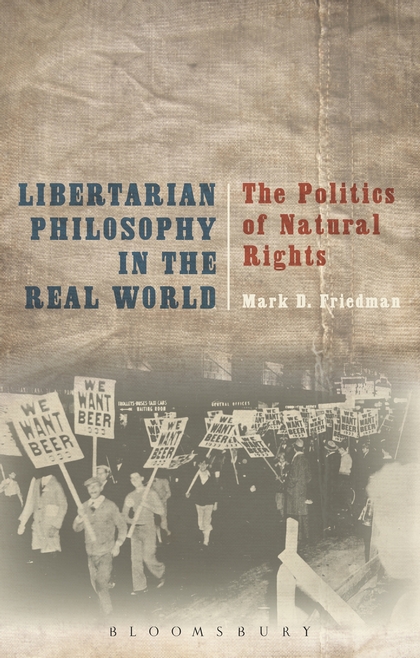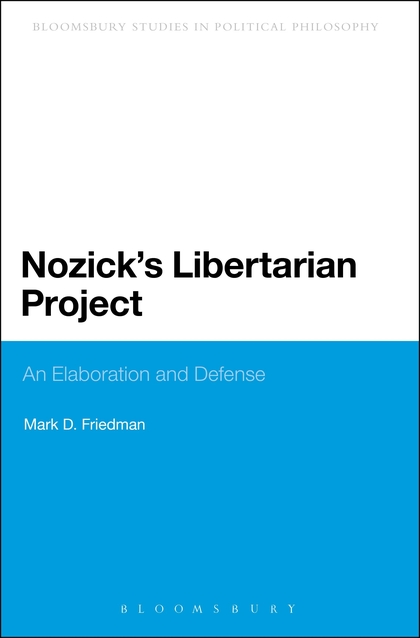January 23rd marks the tenth anniversary of Robert Nozick’s tragically premature death of stomach cancer at the age of 63. Few, if any, 20th century academic philosophers have had as consequential an impact on the world beyond the ivory tower. It is worth, I believe, reflecting for a moment or two regarding this remarkable life of ideas.
Nozick’s scholarship was unusual both for its breadth and influence. Although he is, of course, best known as a political theorist, he made important contributions to philosophy in a number of sub-disciplines. These include epistemology (the “tracking the truth” theory of knowledge); decision theory (his introduction of what is now called “Newcomb’s problem”); and the nature of personal identity (the “closest continuer” theory).
He will, however, always be most closely associated with his 1974 work, Anarchy, State, and Utopia, the full significance of which is perhaps only now beginning to come into focus. While the moral case for what is called “social justice” seems airtight to many (since all human beings are of equal dignity, why shouldn’t we promote a more egalitarian distributions of material goods?), ASU blows a number of gaping holes in it.
At the time of ASU‘s publication, Nozick was already a rising academic star at Harvard, having achieved a full professorship at the tender age of 30. When a philosopher of his stature attempts to kick the ethical props out from under the welfare state, well, people are bound to notice. Thus, ASU was widely reviewed both in prestigious literary periodicals such as The New York Review of Books and the Times Literary Supplement, and in obscure philosophy journals.
The reception was frosty. One prominent liberal philosopher, Thomas Nagel, falsely accused Nozick of offering no argument at all for individual rights, of presenting “libertarianism without foundations.” Brian Barry, another egalitarian-minded philosopher, accused Nozick of seeking to starve and humiliate those dependent on state assistance. Although he appears to have had second thoughts about some of the more extreme implications of the positions taken in ASU, Nozick affirmed his commitment to the core principles of libertarianism in an interview shortly before his untimely death.
Despite the generally hostile reaction of critics, ASU has had a profound impact on both academic political philosophy and in the wider world of ideas. It has been continuously in print since its publication, and has been translated into 11 languages. In October 1995, the Times Literary Supplement included it on its list of the 100 most influential non-fiction books published since the Second World War, and the passage of time has only served to confirm that judgment. It is ubiquitous today in the syllabi of college and university courses in political theory. At least a dozen monographs or anthologies have been devoted to ASU‘s rights-based libertarianism, and countless philosophy papers have been published in response to it.
With perhaps less rigor, but likely with greater passion, Nozick’s ideas are invoked or derided on a daily basis throughout the political blogosphere. Even if his reasoning is not understood precisely, it has encouraged and emboldened those disposed to question the coercion inherent in the welfare state. To quote Keynes, “The ideas of economists and political philosophers, both when they are right and when they are wrong, are more powerful than is commonly understood. Indeed the world is ruled by little else.”
Before ASU there was, of course, Ayn Rand, whose best-seller, The Fountainhead, appeared in 1943. However, academics were virtually unanimous in rejecting her Objectivist philosophy (John Hospers being the notable exception) and the moral theory she derived from it– an idiosyncratic amalgam of ethical egoism and natural law–as incoherent. Moreover, her combative, take-no-prisoners style, exemplified by the title of her best known essay, “The Virtue of Selfishness,” was hardly calculated to win friends and influence people outside of her circle of devotees.
F.A. Hayek’s The Road to Serfdom appeared in 1944, and the insights of this seminal work were elaborated and amplified in The Constitution of Liberty (1960). Hayek was an extraordinarily gifted economist and philosopher, whose own growing influence over the last decade is entirely merited. But his approach to political theory was fundamentally different than Nozick’s. Hayek essentially took the value of moral autonomy as a given, and attempted to show that social policies that interfere with economic liberty will have unforeseen, negative consequences, both for that society’s prosperity and for freedom generally.
One of Hayek’s key insights–that the knowledge required to successfully intervene in something as complicated as the economy is highly dispersed and ever-changing, and thus unavailable to legislators and bureaucrats–applies equally to the state’s efforts to promote the “greater good” by redistributing wealth. But, he has little to say to those who are willing to accept coercion or a less affluent society overall as the price of a more egalitarian distribution of resources. Also, Hayek’s arguments rest on a number of empirical assumptions regarding human behavior, the potential for and gravity of “market failure,” and the inability of state institutions to function under conditions of uncertainty, that many find easy to brush off.
On the other hand, ASU thrusts an exquisitely pointed intellectual dagger at the very heart of the egalitarian enterprise. If libertarianism had a Shema, it would be this book’s first two sentences: “Individuals have rights, and there are things no person may do to them (without violating their rights). So strong and far-reaching are these rights that they raise the question of what, if anything, the state and its officials may do.” It turns out that Nozick’s answer to the query posed in the second sentence is “very little.” The legitimate role of the state is to defend us against foreign enemies, domestic criminals, and to enforce contracts; perhaps (Nozick is not sure) we may also need the state to regulate the environment and build infrastructure.
Nozick’s condemnation of the state’s efforts to promote “social justice” is not based on practical considerations or unintended consequences, but on respect for persons as rational agents. Humans, in contrast to all other (known) forms of life, have the capacity to recognize right from wrong, and to shape our lives in accordance with some overall conception we choose to accept (see ASU, 48-9). The appropriate response to rational agents is, in the words of Immanuel Kant, to treat them “never simply as a means, but always at the same time as an end.”
In the political realm, this means that other people, whether acting individually or through the power of the state, must respect our moral discretion, and that competent adults may never be coerced, even in the name of causes that would be noble if freely chosen. Of course, this precept does not license us to violate the rights of other individuals, because they have a just claim to be treated with equal respect.
Accordingly, the state sins when it forcibly removes resources from the hands of its citizens and uses them for social engineering projects like our ever expanding roster of entitlements or to achieve what it regards as a more just distribution of wealth. In doing so, it uses us solely as a means of achieving some supposedly greater good. But, since humans, in our capacity as rational agents, are the greatest good, this is forbidden.
Thus, the hostility of liberal-minded political philosophers towards ASU was a predictable response to the existential threat it posed to their entire worldview. While certain of Nozick’s arguments are directed specifically against his Harvard colleague John Rawls’ A Theory of Justice (1971), the bulk of his reasoning cuts against a wide spectrum of egalitarian, or what he called “patterned,” theories of political justice. His critique proceeds along two fronts. First, he tries to show first that the moral intuitions that underpin egalitarianism are not as solid as they might first appear, and second, that all patterned principles of justice violate our moral rights. These arguments are briefly summarized below.
Many “liberal” theories of justice are premised on the idea that unequal distributions of resources produced by brute luck–such as a person’s superior natural talents or endowments–are undeserved, and therefore may be rearranged by the state. In rebuttal, Nozick offers a series of counterexamples. Persons do nothing to “deserve” the two healthy kidneys most of us are born with (see ASU, 206). May the state therefore forcibly remove one for the benefit of blameless persons in desperate need of a transplant? Most people would be horrified by such a policy, despite the fact that it would save lives.
Moreover, he says, if my future wife prefers me to another suitor because of my (undeserved) good looks and intelligence, am I nevertheless not entitled to her love? Should society, in order to correct this putative injustice, subsidize the rejected swain’s plastic surgery and special intellectual training? (see ASU, 237). This solution must seem absurd, because it does not follow from the fact that something is undeserved (i.e. not distributed on the basis of moral merit), that it can justly be taken from the holder.
Social justice warriors also ignore the undeniable fact that undeserved natural endowments do not “just happen” to produce wealth; obviously there are intermediate steps. Before a person can exploit her gifts she must develop them, and beyond this, she must typically offer things that others wish to obtain by means of voluntary exchange. Apart from this, some holdings arise by gift or bequest, and as a result of luck.
Accordingly, under Nozick’s theory of justice, the structure of holdings will not track moral merit, virtue, or the like, but this does not make them “morally arbitrary,” i.e. random or whimsical. To the contrary, they are in large measure the product of the autonomous choices that rational agents make in developing their talents, investing their labor and capital, and selecting the recipients of gratuitous transfers (see ASU, 158-9, 213-6). And, as a practical matter, it is impossible to segregate out that portion of holdings that result from “dumb” luck. Thus, even accepting the idea that the distribution of holdings cannot be morally arbitrary, luck egalitarians fail to give us any reason why people are not entitled to the holdings generated in a free market economy.
The second prong of Nozick’s attack on the concept of social justice rests on the notion that it is incompatible with our instinctive commitment to individual freedom. His most famous argument in this regard is named after Wilt Chamberlain, the former basketball great (see ASU, 160-3). Imagine, Nozick says to his intellectual adversaries, that we live in a society that perfectly conforms to your ideal distribution of wealth, i.e. perhaps everyone has roughly equal shares. Then, Wilt comes along and due to an increase in the demand for tickets the owner of his team raises prices, with the premium going mostly to his star player.
Soon, Wilt becomes very wealthy, but only through entirely voluntary transactions. As Nozick observes, inevitably “liberty upsets patterns,” and the only way that the “ideal” distribution of wealth can be maintained is by, in his memorable phrase, “forbidding capitalist acts between consenting adults.” Since we intuitively think that transactions between fully informed and willing persons are benign, this outcome dramatizes the inherent conflict between our commitment to liberty and the goal of equality.
Additionally, in his “income taxation as forced labor” argument Nozick draws an analogy between forcing a person to work for the state in order to promote social justice and taxing away earnings generated by that same quantity of labor. Since we know that (for example) compelling people to build housing for the poor under threat of punishment is morally wrong, how then, asks Nozick, can it be legitimate for the state to confiscate the fruits of a person’s labor in order to achieve the same objective? When you seize a person’s income aren’t you in effect taking the labor expended to produce it?
Obviously, there are differences between forced labor and income taxation in that the taxpayer has greater control over the manner in which income is generated than the individual forced to work at the point of a gun. However, an essential part of being a rational agent is the exercise of our discretion with respect to the value we create. Thus, while forced labor and income taxation are not morally equivalent, they are morally impermissible for the same reason, i.e. they violate the Kantian prohibition against coercing autonomous agents.
Apart from its novel and striking anti-egalitarian arguments, ASU is remarkable in other ways as well. As many commentators have noticed, it is written in a style rarely encountered in academic philosophy. It is self-consciously exploratory, provisional and discursive. Nozick forthrightly acknowledges that he lacks pat answers to many of the thorny questions he confronts, but pleads that in philosophy “there is room for words on subjects other than last words.”
As one would expect, then, there are gaps and equivocations in his overall argument. He hedges his absolute constraint against state coercion by admitting that it might have to be relaxed in order to prevent “catastrophic moral horror,” presumably like innocent persons starving in the streets. His argument against the anarcho-capitalists, who claim that the minimal state is also illegitimately coercive, is widely regarded as a failure. But, of course, this doesn’t suggest that the individual anarchist’s claims are irrefutable and, in any case, Nozick’s failure in this regard is cold comfort to egalitarians who are already committed to the interventionist state in order to promote what they call social justice.
Nozick was perhaps the last century’s most important exponent of liberty. His derivation of individual rights as originating in our rational agency is the most persuasive one yet offered, and his critique of egalitarian conceptions of justice remains devastating. Those of us who cherish the values that have animated this nation for most of its history owe him a profound debt.






